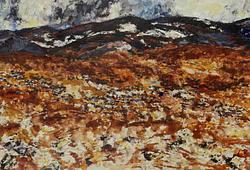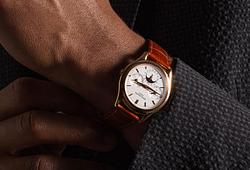ELVAHÖVDAD AVALOKITESHVARA, brons. Tibetokinesisk, 1800-tal.
Stående gudom med åtta armar och elva huvuden som är arrangerade i tre rader, krönt av ett huvud med vredgat uttryck och ett litet Amitabha huvud. Huvudgesten i anali mudra. Gudomen är besmyckad och har ett hjortskinn över ena axeln, sjal och dhoti med dekorerad bård. Stående på en enkel lotustron. Höjd 29 cm.
Skada vid ena armen, attribut saknas, sekundär mittsåndare i nedre kronraden. Slitage.
Proveniens
Aquired by Nils Hartog (1888-1952). A Swedish Merchant who lived in Japan during the 1920's. He traded in porcelain and weapons. During the years they made several jouneys around Asia and visited Peking, Shanghai, Korea and other places. Enclosed here are some images from his travels.
Litteratur
The eleven-headed form of the popular bodhisattva Avalokiteshvara has been revered in China from the late Ming dynasty through the Qing. The distinctive lotus base, consisting of bands of raised lotus flowers skilfully cast in repoussé, can be seen on three other Imperial Kangxi gilt-bronze figures of Amitayus, Vajradhara and Green Tara, all from the Qing court collection and preserved in the Palace Museum, Beijing, illustrated in The Complete Collection of Treasures of the Palace Museum: Buddhist Statues of Tibet, Hong Kong, 2008, pp. 239-241, pls. 228-230.




















































































